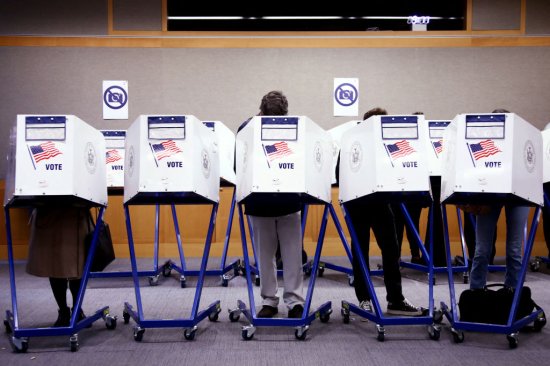
The winner-take-all system breeds political disillusionment, turns voters off from democracy, and encourages extreme candidates.
The high stakes U.S. election this week is on track to match the record 66% turnout set four years ago, and surpass the routinely lower midterm election turnout that peaked at 49% in 2018. But as records go, these look sad when you consider that many democracies get closer to 80% of their voters to head to the polls.
With between a third or half of all voters deciding to stay home, and most voters expressing dissatisfaction with the options they are being offered at the ballot box, it is worth taking a step back to understand how America elects its leaders. These choices are not just leaving people disillusioned with politics, they are turning people away from our democracy itself and opening a door to ever-more extreme candidates.
[time-brightcove not-tgx=”true”]The U.S. electoral system remains an outlier among democracies. Instead of electing a single representative from a district, most democracies elect multiple ones from each district in proportion to the share of votes each party receives. So, for example, in a district with five members, if a party gets 40% of the votes, it gets two of the five seats. This kind of system is called proportional representation. Most democracies embraced proportionality decades ago—and for good reason.
That’s because when elections are more competitive, more voters turn out because they think their voice actually matters. So it’s no surprise that U.S. turnout is so abysmal. Every cycle, at least four-out-of-five congressional districts are safe for their incumbents. Nationwide, seven out of 10 races in the general election were uncontested, including almost half of state legislative races and five percent of congressional ones where only one candidate was on the ballot. This lack of competition is one consequence of our choice to elect representatives from single-member districts.
And the culprit for this is not gerrymandering. Even states that have created independent redistricting commissions to avoid partisan gerrymandering are still mostly uncompetitive. As Americans continue to sort themselves geographically in Red or Blue areas, natural clusters dominated by one party are increasingly emerging. In some cases, the geography of where and how people live makes it impossible to draw single member districts that give partisan or racial minorities a fair shot at representation.
Look at Massachusetts and Oklahoma. A third of voters in Oklahoma are Democratic, but all five of its congressional seats went to Republicans. And a third of voters in Massachusetts are Republicans, but all nine of that state’s congressional seats went to Democrats. And it’s not because Massachusetts drew districts that disadvantaged Republicans—it’s because you cannot draw a single member district in the state that would elect a Republican. In fact, researchers found that “[t]hough there are more ways of building a valid districting plan than there are particles in the galaxy, every single one of them would produce a 9–0 Democratic delegation.” In order words, drawing single member districts differently isn’t enough—we need to rethink the map entirely.
There are sensible reforms that can help fix things. Moving away from single-member districts and toward proportional representation would force Democrats and Republicans to compete in more districts, encourage other candidates to run, and increase turnout because voters have actual choices. It is also functionally impossible to gerrymander districts under proportional representation.
The good news is that federally and across many states, these reforms can be adopted by simple statutory changes. And at the state level, the ballot initiative process allows voters to change the constitution at the ballot box.
Proportional representation has been tried before. Illinois used a partially proportional system for over a century after the Civil War. Representatives for the state House were elected from three member districts, roughly in proportion to the votes cast. If a candidate could get over a quarter of the vote, they could generally win one of the seats in a district. The results in Illinois reflected the experience of other democracies with proportional systems—elections are generally more competitive, and minorities are able to secure representation that better reflects their numbers. Unfortunately, Illinois repealed its proportional voting system in 1980, and the share of state House races that went uncontested rose from 4% then to 44% this year.
Many Americans are angry at the electoral system. They don’t trust our democratic institutions. They are tired of the choices or lack of choices that it is offering. But it doesn’t have to be this way. The question is: Are people angry enough to pass reforms—like proportional representation—that can make some big changes to finally fix it?
Our democracy may come to depend on the answer.
TIME Ideas hosts the world's leading voices, providing commentary on events in news, society, and culture. We welcome outside contributions. Opinions expressed do not necessarily reflect the views of TIME editors.